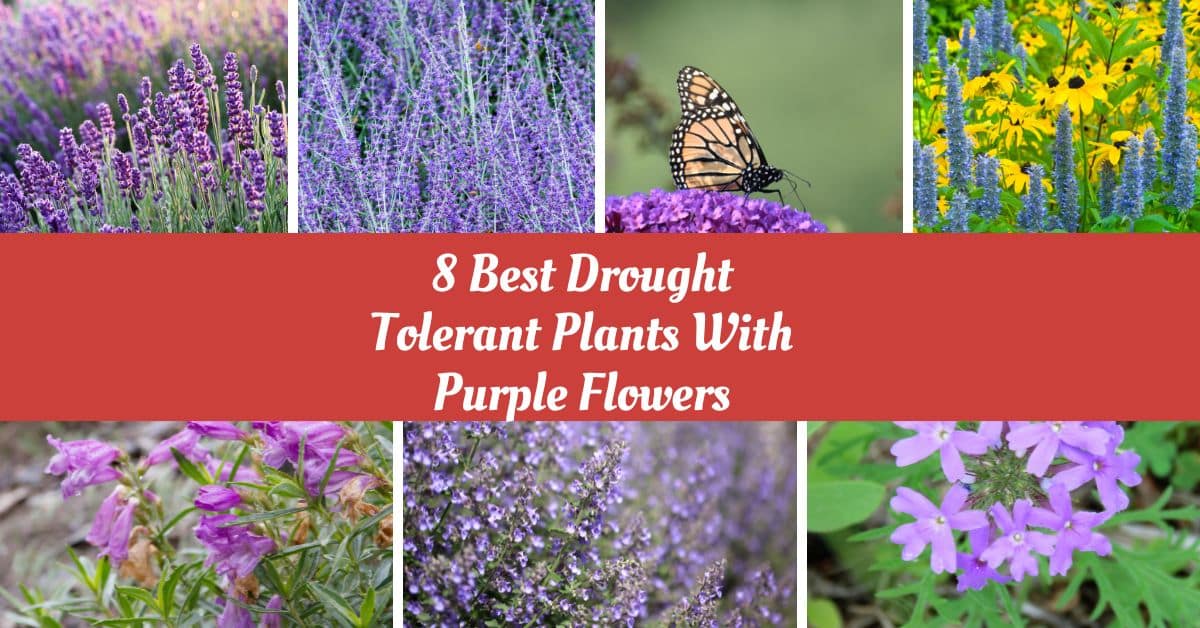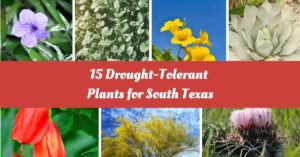Drought-tolerant plants are essential to any garden, especially in areas prone to dry weather conditions. These plants can survive and thrive with minimal water, making them an excellent choice for gardeners who want to conserve water and reduce their environmental impact.
When it comes to choosing drought-tolerant plants, purple flowers are an excellent option. Not only do they add a vibrant pop of color to your garden, but they also have unique characteristics that make them well-suited for dry conditions.
In this article, we will explore the benefits of drought-tolerant plants with purple flowers.
8 Best Drought-Tolerant Plants With Purple Flowers
1. Lavender (Lavandula spp.)

Lavender is a tough-as-nails drought-resistant plant admired for its exquisite purple blooms and aromatic fragrance. Originating from the Mediterranean, this plant flourishes in arid and sun-drenched environments.
In addition to its stunning flowers, lavender has several medicinal properties, including promoting relaxation and reducing stress.
Some of the most popular lavender varieties with purple flowers include English lavender (Lavandula angustifolia), French lavender (Lavandula dentata), and Spanish lavender (Lavandula stoechas).
2. Russian Sage (Perovskia atriplicifolia)

Russian Sage is a tough, drought-tolerant perennial that produces spikes of purple flowers in mid to late summer. This plant is native to central Asia and can grow up to four feet tall in ideal conditions.
The plant’s grey-green foliage and purple flowers add a unique and attractive texture to any garden. Its blooms are a prime hotspot for pollinators like bees and butterflies.
Taller cultivars of Russian Sage, such as ‘Little Spire’ and ‘Blue Spire,’ can add vertical interest and structure to a garden. It can be grown as a companion plant with another drought-tolerant plant, such as lamb’s ear.
3. Butterfly Bush (Buddleja davidii)
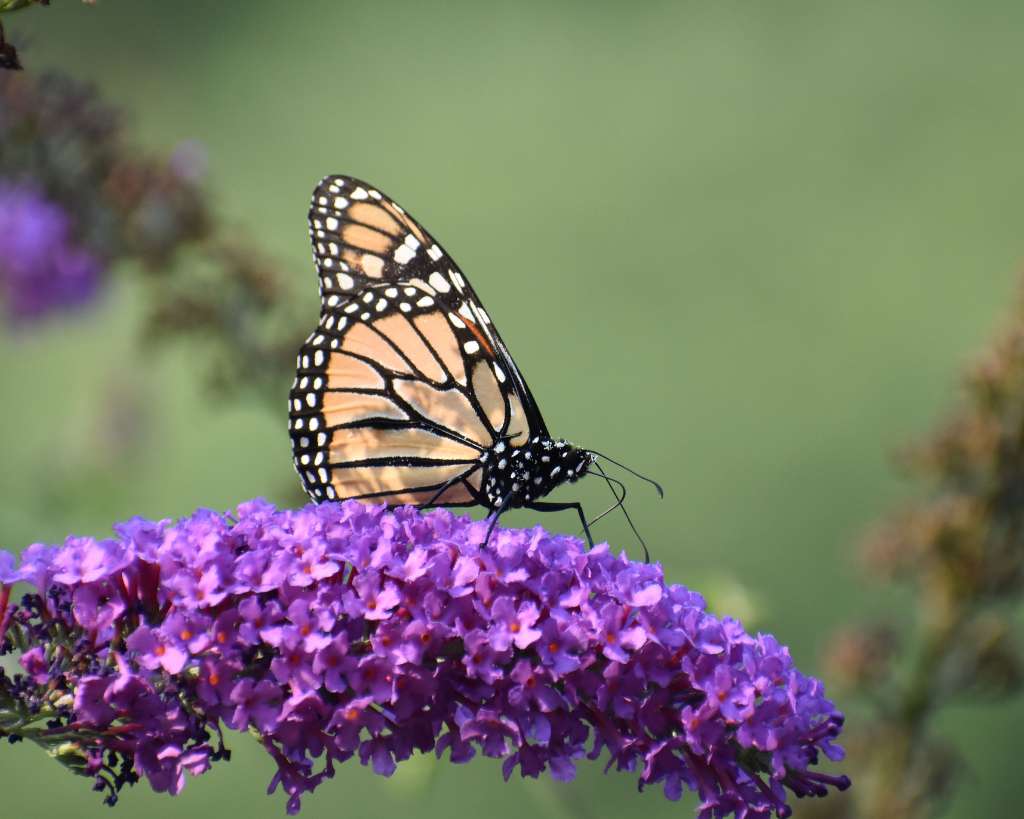
Butterfly Bush, also known as Buddleja davidii, is a drought-tolerant shrub that produces fragrant clusters of purple flowers in summer. It is a huge favorite among gardeners due to its ability to attract pollinators.
This plant can grow up to ten feet tall and is an excellent option for adding height and structure to a garden. It can be planted as a focal point in a mixed border, surrounded by lower-growing plants that complement its color and texture.
It is classified as a weed in some parts of the U.S. and Canada. Moreover, it has been noted as an invasive species in some parts of the world, such as the United Kingdom, New Zealand, and the Republic of Ireland.
Black Knight, Royal Red, Lochinch, and Purple Haze are well-known butterfly bush purple-colored varieties.
4. Agastache (Agastache spp.)

Agastache, also known as hyssop or hummingbird mint, is a drought-tolerant plant that produces spikes of tubular purple flowers in late summer and fall. It is planted by gardeners to attract pollinators. It is resistant to deer and rabbits.
Some species of Agastache, such as Agastache rupestris, can produce a combination of drought-tolerant orange and purple flowers. These plants are sometimes called “Sunset Hyssops” because of their colorful blooms resembling a sunset.
Agastache can also be used in a naturalistic or meadow garden with similar native flowering plants such as salvia and black-eyed Susan, attracting pollinators and adding interest to the landscape. Agastache can be planted with dusty miller to create an attractive contrast in the garden.
5. Mexican Bush Sage (Salvia leucantha)
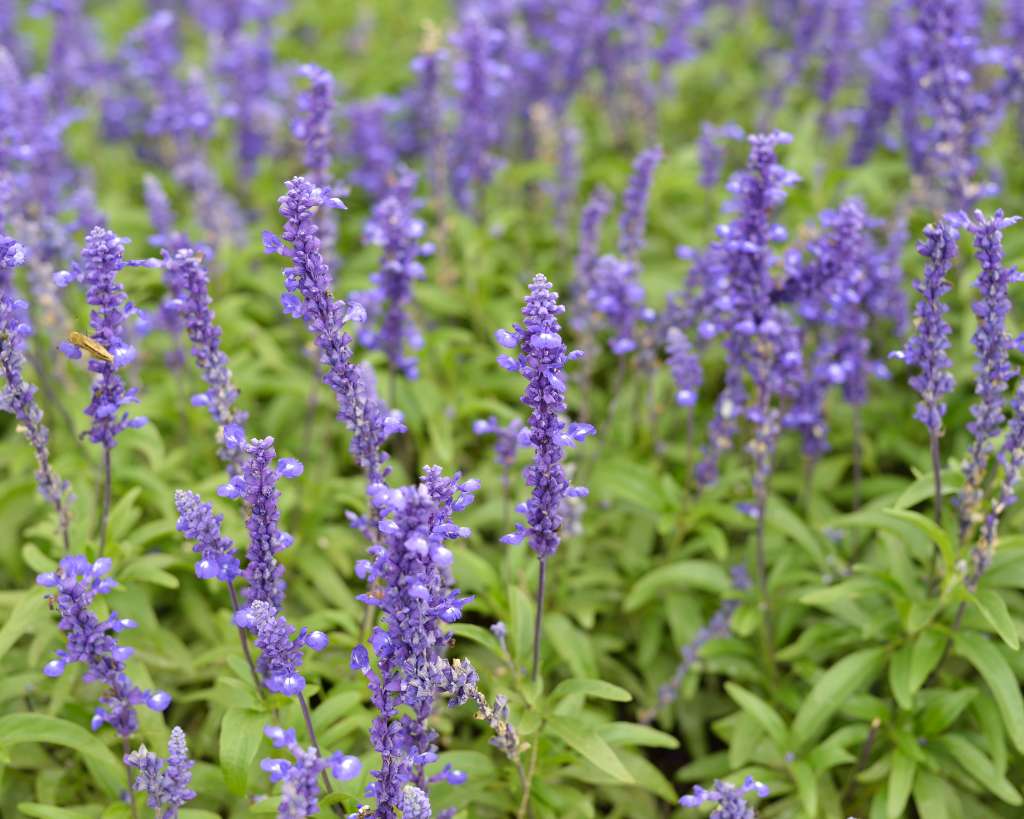
Mexican bush sage is perhaps the most attractive variety of salvia, producing spikes of beautiful purple flowers with velvety, white bracts. It is a drought-tolerant perennial that can grow well in different climatic conditions.
Its purple-colored blooms attract hummingbirds, bees, and butterflies. Deer, rabbits, and other pests hate it.
Mexican Bush Sage can be used as a focal point in a garden bed or combined with other perennials and annuals to create a vibrant display of color. Its upright growth habit also makes it a good choice for the back of a border, where it can add height and structure.
6. Catmint (Nepeta spp.)

Catmint is a popular drought-tolerant perennial with lovely purple-colored blooms and gray-green foliage. Gardeners love its long blooming period and the ability to attract hoards of pollinators.
Catmint can grow up to three feet tall and wide, making it a great choice for filling in gaps in a garden bed or border. One way to incorporate Catmint into a landscape design is to plant it in a mixed border, surrounded by lower-growing plants such as lamb’s ear and dusty miller that complement its color and texture.
Some popular catmint drought-tolerant plants with purple flowers are Walker’s Low, Six Hills Giant, Little Trudy, and Cat’s Pajamas.
7. Verbena (Verbena spp.)
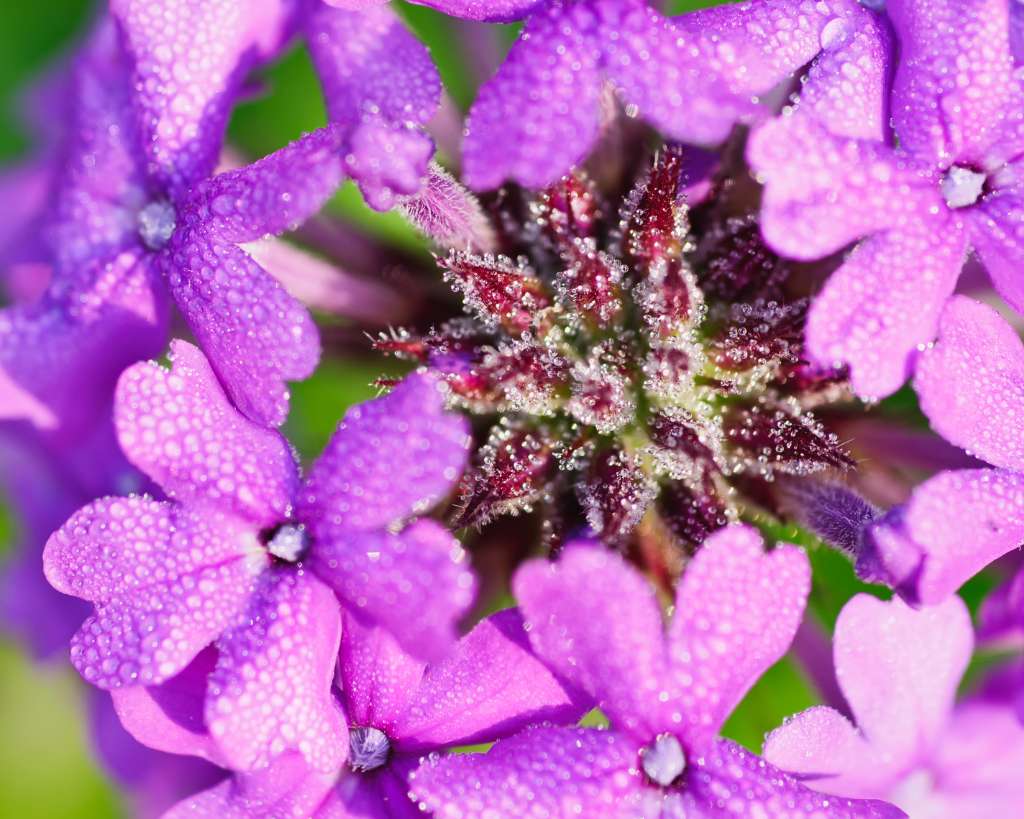
Verbena is a hardy, drought-tolerant plant available in various colors, including purple, pink, red, and white. This plant produces clusters of small, fragrant flowers on tall, wiry stems that can reach up to two feet in height.
The lovely verbena blooms attract pollinators like hummingbirds, bees, and butterflies. It has been used as a herbal medicine by a lot of faith healers, but there needs to be more evidence about its effectiveness.
You can use verbena in landscape borders, groundcovers, and containers. First of all, if you want to use verbena in landscape borders, you can plant it in groups of 3-5 plants spaced about 12-18 inches apart, depending on the size of the cultivar.
Verbena is a popular choice for ground covers because of its low-growing and spreading nature.
‘Homestead Purple,’ ‘Superbena Royale Plum Wine’, ‘Lollipop’, and ‘Imagination’ are verbena varieties with purple-colored blooms you can grow in your backyard.
8. Penstemon (Penstemon spp.)

Penstemon plants are adored by gardeners for their attractive tubular flowers, which come in various colors, including purple, pink, red, and white, adding a pop of color and texture to any garden setting.
Penstemon’ Husker Red’, Penstemon ‘Midnight,’ Penstemon ‘Pike’s Peak Purple,’ Penstemon’ Purple Bedder, and Penstemon ‘Raven’ are some varieties of penstemon with purple flowers. When selecting a Penstemon cultivar, consider its mature size, bloom time, and preferred growing conditions to ensure it fits your garden correctly.
Its tubular-shaped nectar-rich blooms are known to be one of the finest perennial flowers to attract hummingbirds. Other pollinators, such as bees and butterflies, also love it. It is known to be disliked by deer and rabbits.
Penstemon plants come in varying sizes that can be incorporated into different gardening design ideas, such as xeriscape gardens, rock gardens, container gardens, and cut flowers.

